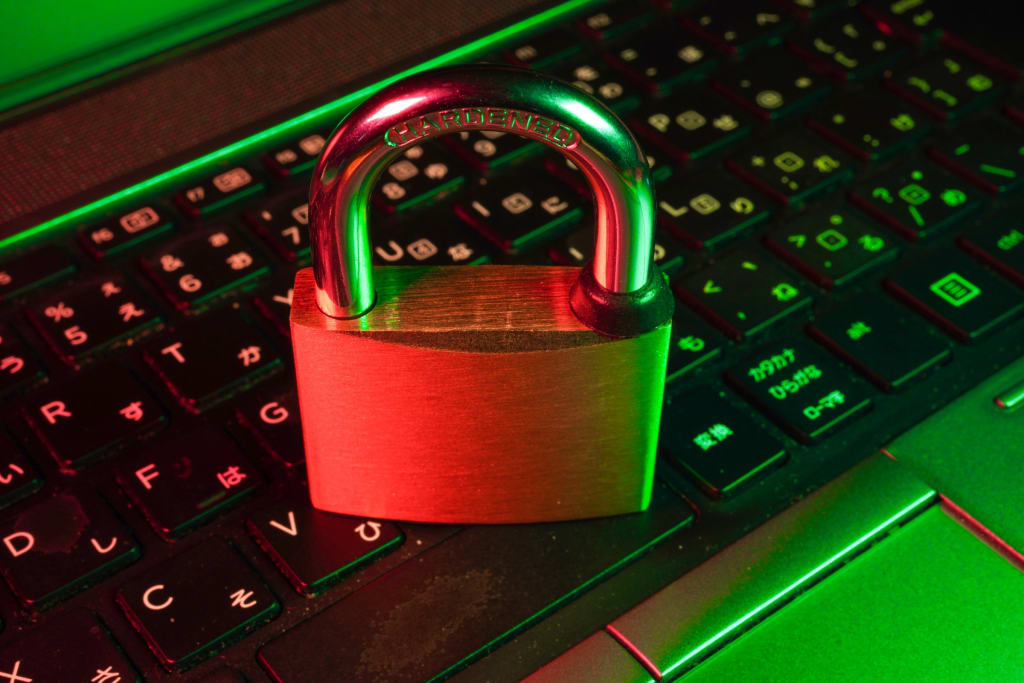Why IoT Security is a Top Priority in Today's Digital Age
IoT devices are vulnerable to attacks and can be exploited by hackers to gain access to sensitive information or control critical systems

As technology advances, the Internet of Things (IoT) has become an increasingly popular topic. IoT refers to the network of physical devices, vehicles, home appliances, and other items that are embedded with sensors, software, and network connectivity. These devices can collect and exchange data, making our daily lives more convenient and efficient. However, the rapid growth of IoT also brings with it serious security concerns. In this article, I will explore why IoT security is a top priority in today's digital age, the risks and challenges associated with it, and best practices for ensuring IoT security.
Understanding IoT and Its Impact on Our Daily Lives
IoT has become an integral part of our daily lives, from smart homes to wearable devices. Smart homes allow us to control our lights, thermostats, and security systems from our smartphones, while wearable devices track our heart rate, physical activity, and sleep patterns. IoT technology has also been integrated into healthcare, transportation, and industrial systems, making them more efficient and effective.
However, as the number of IoT devices increases, so does the risk of cyber attacks. IoT devices are often designed with minimal security features, making them vulnerable to hacking and data breaches. These attacks can lead to serious consequences, such as identity theft, financial loss, and even physical harm.
The Importance of IoT Security in Today's Digital Age
In today's digital age, data is the most valuable asset. IoT devices collect and transmit sensitive data, including personal information and financial data. Therefore, it is important to ensure that this data is protected from unauthorized access and use.
Moreover, IoT devices can be used as a gateway to access other devices on the same network, making them a potential entry point for hackers. A single compromised IoT device can lead to a full-scale attack on the entire network, causing significant damage to businesses and individuals alike.
The Risks and Challenges Associated with IoT Security
One of the biggest challenges with IoT security is the lack of standardization. IoT devices are designed by various manufacturers, each with their own security protocols and standards. This makes it difficult to ensure that all devices on a network are secure and compatible with each other.
Another challenge is the complexity of IoT devices. Unlike traditional computers and smartphones, IoT devices are often designed to be simple and user-friendly. This means that they may not have the same level of security features as traditional devices, making them more vulnerable to attack.
Finally, the sheer number of IoT devices makes it difficult to manage security effectively. As the number of devices on a network increases, so does the complexity of managing and securing them.
Current State of IoT Security
The current state of IoT security is concerning. According to a report by the Ponemon Institute, 97% of IoT devices are vulnerable to cyber attacks. Furthermore, the number of IoT-related security incidents has increased by 600% since 2016.
Despite the growing threat, many IoT device manufacturers continue to prioritize functionality over security. This has led to a significant number of devices being released with known vulnerabilities and weak security features.
Best Practices for IoT Security
To ensure IoT security, there are several best practices that individuals and businesses can follow. These include:
Updating IoT devices regularly: Manufacturers often release security updates and patches to address known vulnerabilities. It is important to ensure that all IoT devices are updated regularly to ensure maximum security.
Using strong passwords: Weak passwords are a common entry point for hackers. It is important to use strong, unique passwords for all IoT devices and to change them regularly.
Securing the network: Strong network security is essential for protecting IoT devices. This includes using firewalls, encryption, and other security protocols.
Limiting access: Not all users need access to all IoT devices. Limiting access to only those who need it can help reduce the risk of unauthorized access.
IoT Security Standards and Regulations
To address the lack of standardization in IoT security, several organizations have developed IoT security standards and regulations. These include:
The National Institute of Standards and Technology (NIST) Cybersecurity Framework: This framework provides a set of guidelines and best practices for securing IoT devices.
The European Union General Data Protection Regulation (GDPR): This regulation sets out strict guidelines for the collection, use, and storage of personal data, including data collected by IoT devices.
The IoT Security Foundation: This organization promotes the development of security standards for IoT devices and provides guidance for manufacturers and users.
IoT Security Trends and Predictions
As IoT technology continues to evolve, so too will the security threats and challenges. Some of the key trends and predictions for IoT security include:
The rise of IoT botnets: Botnets are networks of compromised devices that can be used for malicious purposes. With the growing number of IoT devices, the risk of IoT botnets is increasing.
The use of artificial intelligence (AI) for IoT security: AI can be used to detect and respond to security threats in real-time, making it a valuable tool for IoT security.
The integration of blockchain technology: Blockchain technology can be used to create a secure and decentralized network for IoT devices, making them more resistant to cyber attacks.
IoT Security Tools and Technologies
Several tools and technologies can be used to enhance IoT security. These include:
IoT security platforms: These platforms provide a comprehensive suite of security tools and services for IoT devices.
Encryption: Encryption can be used to protect data transmitted between IoT devices and the network.
Intrusion detection and prevention systems (IDPS): IDPS can be used to detect and respond to security threats in real-time.
The Role of Businesses in Ensuring IoT Security
Businesses have a crucial role to play in ensuring IoT security. As the number of IoT devices used in business environments increases, so too does the risk of cyber attacks. It is important for businesses to prioritize IoT security and implement best practices to protect their networks and data.
Moreover, businesses have a responsibility to ensure that their IoT devices are secure and do not pose a risk to customers or the public. This includes conducting regular security assessments, ensuring that all devices are updated and patched, and providing clear guidance on how to use IoT devices securely.
Conclusion - Taking Action for a Secure IoT Future
In conclusion, IoT security is a top priority in today's digital age. The growing number of IoT devices and the increasing sophistication of cyber attacks make it essential to prioritize IoT security. By following best practices, adopting security standards, and investing in security tools and technologies, we can ensure a secure IoT future.
As an individual, it is important to take responsibility for our own IoT security by using strong passwords, updating devices regularly, and securing our networks. As businesses and organizations, it is important to prioritize IoT security and take steps to ensure that our customers and the public are protected. Together, we can create a secure and efficient IoT ecosystem.
CTA
To learn more about IoT security and how to protect your devices and network, contact us today. Our team of experts can provide guidance and support to ensure that your IoT devices are secure and your data is protected.
About the Creator
Ali Aoun Meraj
I'm a smart content writer with some intellectual ideas .I have Diploma in Software Technology in addition I'm also a Social Media Manager and a Game Developer too.
Enjoyed the story? Support the Creator.
Subscribe for free to receive all their stories in your feed. You could also pledge your support or give them a one-off tip, letting them know you appreciate their work.





Comments
There are no comments for this story
Be the first to respond and start the conversation.